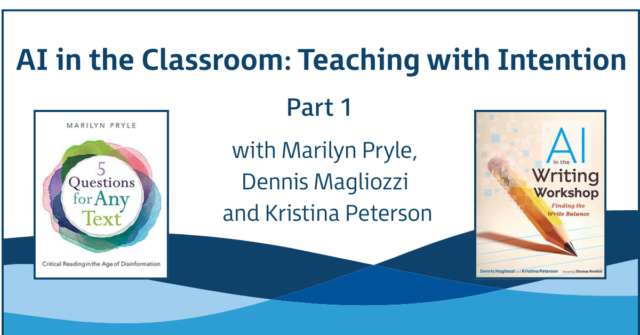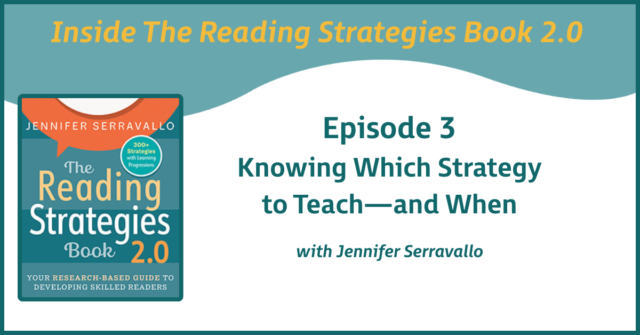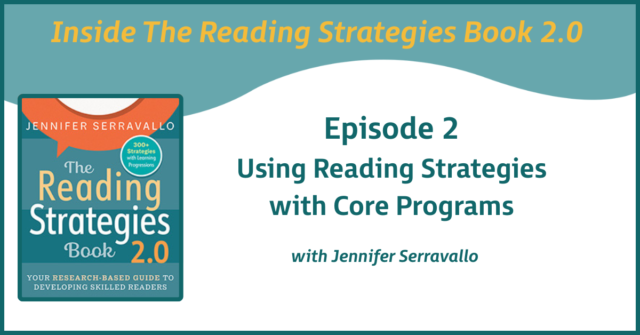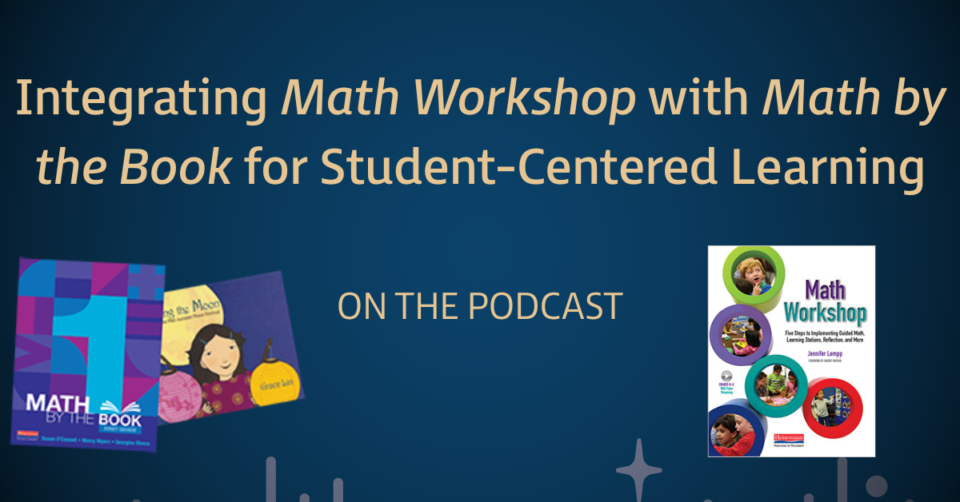
In this episode, I'm joined by Jennifer Lempp, author of Math Workshop, and Sue O'Connell, co-author of Math by the Book. Together, they share how these two powerful resources can work hand in hand to bring structure, creativity, and real world context to elementary math instruction.
They explore how to use children's literature to launch math investigations, how to differentiate through small groups, and ultimately build a classroom culture where students see themselves as capable problem solvers. And now, this bundle of books is available to purchase at heinemann.com.
Transcript
Jennifer Lempp:
Yeah. Math Workshop is really a structure. It's a format for how your math class can run each day. And that structure is really grounded in a philosophy about how kids learn, what their experiences in math should look like, and then what our role as the teacher is in order to make that happen. The structure starts each day with a really positive first impression, a number sensor reasoning routine, and then you move into a blend of both whole group and small group instruction.
That whole group time allows us to introduce concepts and get a glimpse into what students know and what they don't know yet. And then, small group time provides us the opportunity to get to know students even better. And then, we can approach that instruction with the greatest amount of differentiation. Then, as the teacher is working with small group of students, the other students are engaged in really meaningful learning stations or centers. And then, each class ends with a reflection.
I think what's important to know about Math Workshop is that, within the structure, you'll see the tenets of best practices, you'll hear a lot of student discourse, there'll be a lot of cooperative learning and choice. Math Workshop is the space where students are doing more of the math than the teacher, and the students believe in themselves as capable and flexible problem solvers.
Edie:
Then Sue, I'd love for you to tell us about Math by the Book.
Sue O’Connell:
Well, Math by the Book is a K-5 teacher resource that shares grade-specific math lessons that are jump-started through a piece of children's literature. It's not a single book, it's a series of books. There's a book for each grade level from K to five. And in each book we focus on 20 math topics that are taught at that grade level. And we pair each one with a story from children's literature. And then, that story becomes the context through which the students explore the mathematics.
Math by the Book will give two, three, four engaging lessons that are explorations or investigations. It'll offer lists of math problems that go with that math topic and that context from that story. It has a series of writing and discussion prompts. It has interactive practice tasks where students are playing games or doing modeling. All of it is very hands-on and very much focused on math talk. So, what you see in Math by the Book in the different topics is you'll see a beginning page where it tells you what piece of literature and what specific math topic.
I'm looking at one, Thanking the Moon: Celebrating the Mid-Autumn Moon Festival by Grace Lin. And this book, we paired with the idea of exploring adding and subtracting 10. And there was a page in the book where mama is putting mooncakes, taking them out of a basket and putting them on a plate. And she's not putting enough on the plate for the whole group that's there. And so, we do this, well, we need more mooncakes. This isn't going to be enough. So, let's imagine that mama pulls 10 more mooncakes out of that picnic basket and puts them on the plate. How many will we have now? And that's really what started the investigation.
And what we do in Math by the Book is we give ideas for reading the book, before, during, and after questions that will pull kids into the story and intrigue them about the story. And then, we start on investigations. Essentially, it's kids gathering data about what happens when they have three mooncakes and add 10, five mooncakes and add 10, seven mooncakes and add 10. Look back at your data. What do you notice? Can you predict if there were nine mooncakes and you added 10?
So, a lot of investigating and having students come up with rules and generalizations in mathematics. So, not only does it give teachers lots of lessons and prompts and problems and practice tasks, but I hope it is also a model for teachers to show the way they can step back and explore mathematics and get kids... Again, as Math Workshop does, making mathematics student-centered.
Edie:
I imagine there are frequently asked questions when educators are starting to implement or thinking about implementing the pedagogy in your book. Let's talk through some of those.
Sue:
Sure. I am frequently asked, which lessons that we've written in these resources, which lesson should I do whole class? Which lesson should I do small group? And we intentionally did not say that something should be a whole group or a small group lesson. We felt as though that was something that was up to the teacher to fit it into their structure.
But I think that attests to the fact that teachers sometimes strive for a little more structure in even where they place activities that are already developed, which we have in math and practice, but how that fits in kids moving from whole group to small group to stations or centers. And so, that's my most frequently asked question, is tell me, should this be a whole group? Should this be a small group? That kind of thing.
Jennifer:
Yes. And for me, after someone reads the Math Workshop book, they get a lot of information about the components and the structure. They understand the philosophy. And teachers really embrace the workshop structure, but they often ask me about that more quality... Where do I find those quality whole group and small group lessons or different station activities to plug in? They want a resource that will help make Math Workshop possible in their classrooms. And that's really what started the conversation between Sue and I, it's about the complementary features of the resources.
Sue:
It was really fun when we first started talking. It was kind of that conversation like, "Oh, my gosh. I'm always asked for what structure." And then Jennifer saying, "I'm always asked for give me some good lessons to fit into this structure that I've developed." So, that's where we started really talking about, "Wow, these two fit together really well."
Jennifer:
They really do. And I just feel like that's that perfect little marriage between the two of the resource with the content and that structure.
Edie:
Yeah. Let's get more into that.
Sue:
We felt as though together they provide that content and structure for math lessons. If you look at Jennifer's Math Workshop model and the structure, she was just mentioning you start with a number routine, something to really engage kids and get them talking and thinking right away. Teachers pull from Steve Wyborney's estimation or splat activities, or maybe things like same and different, or things like which one doesn't belong? Really to get the kids going. But then, she moves into a focus lesson, and that's where in, Math by the Book, that would be a perfect place to do a read-aloud of that story. Have your whole class hear about the characters, the events in the story. And maybe do one of the first investigations with the whole class that introduces that math topic.
But then, as Jennifer's structure goes into small group, Math by the Book has more explorations in there. So, you could do a second or a third exploration with small groups that's still about that same story content that we all read together. Or maybe a small group could pull one of the math problems that are in Math by the Book and explore that as their small group tasks for the day. Exploring a problem solving task. In Math Workshop, they move into learning stations. And in Math by the Book, we have two or three interactive practice tasks that link to that math topic, gives students practice with the math they've been learning through that context. And again, what a great quick jump start to here are your stations. You don't have to go develop them all, pull these practice tests and here's a great idea, make these your stations.
And then, Jennifer ends with a student reflection. Of course, we always want kids to come back together and to really think about what they've learned and summarize and talk about. And that's where, again, in Math by the Book, for every math topic, we have a list of these talk and write prompts. You don't do all of them. You pick one that you like that day and do that one as your student reflection at the end of the session. So, it's really about plugging the content pieces from Math by the Book into the structure of Math Workshop. And just the way they're written, it's pretty easy to do that.
Jennifer:
And Sue has done such a beautiful job of selecting the most rich, engaging stories that you can't help but be a student in the classroom and be curious about the mathematics that are involved in those books. The books are beautifully written, and any kid who reads those and who gets those read aloud to them is going to automatically just be completely engaged in that lesson.
I think what we also just think about, teachers have a large workload. And we don't want teachers to ever think that they need to reinvent materials or go searching high and low for what to use in class. Math Workshop can provide the structure, it can provide the format for what can realistically happen in a school day. And Math by the Book provides the content and an instructional approach. And by mixing and matching what you see and Math by the Book into the components of Workshop, and for what your students need most, you have all the right ingredients for that successful and joyful math class.
Edie:
Thanks so much for tuning in today. You can learn more about each of these resources and read a full transcript at blog.heinemann.com. And don't forget, these books are available as a bundle for purchase at heinemann.com.
About the Author
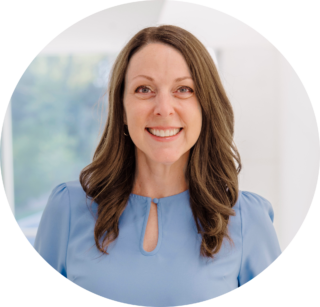
Dr. Jennifer Lempp is co-author of Math Workshop: Five Steps to Implementing a Student-Centered Learning Environment (6-12) and the author of Math Workshop: Five Steps to Implementing Guided Math, Learning Stations, Reflection, and More. This book is a practical resource meant to support teachers with strategies and structures to help create a learning environment where students are engaged in purposeful mathematics experiences.
Jennifer consults with schools and districts around the country, providing professional development on mathematics content and instructional practices. Additionally, she supports school leaders on the development of mathematics professional learning and school improvement plans.
Jennifer’s goal is to ensure all students have positive mathematics experiences and that teachers have the tools to support all students in the area of mathematics. You can follow Jennifer Lempp on Twitter @Lempp5 or Instagram @jennifer_lempp and learn more about her and her work on her website: mathworkshop.net.
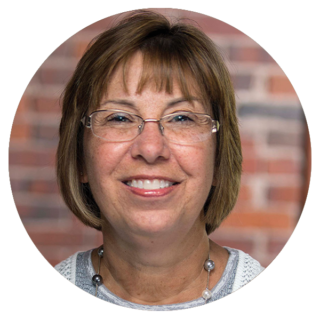
Susan O’Connell has decades of experience supporting teachers in making sense of mathematics and effectively shifting how they teach. As a former elementary teacher, reading specialist, and math coach, Sue knows what it’s like in the classroom and her background is evident throughout her work as she unpacks best practices in a clear, practical, and upbeat way.
Sue is the lead author of the new Math by the Book series, a K-5 resource connecting math and children's literature.
She is also the lead author of Math in Practice, a grade-by-grade K-5 professional learning resource. She is also coauthor of the bestselling Putting the Practices Into Action, Mastering the Basic Math Facts in Addition and Subtraction, and Mastering the Basic Math Facts in Multiplication and Division. She served as editor of Heinemann’s popular Math Process Standards series and also wrote the bestselling Now I Get It.
Sue is a nationally known speaker and education consultant who directs Quality Teacher Development, an organization committed to providing outstanding math professional development for schools and districts across the country.
Watch an introductory Math in Practice webinar, hosted by Sue.
Click here to watch Sue talk about the links between reading and math.
